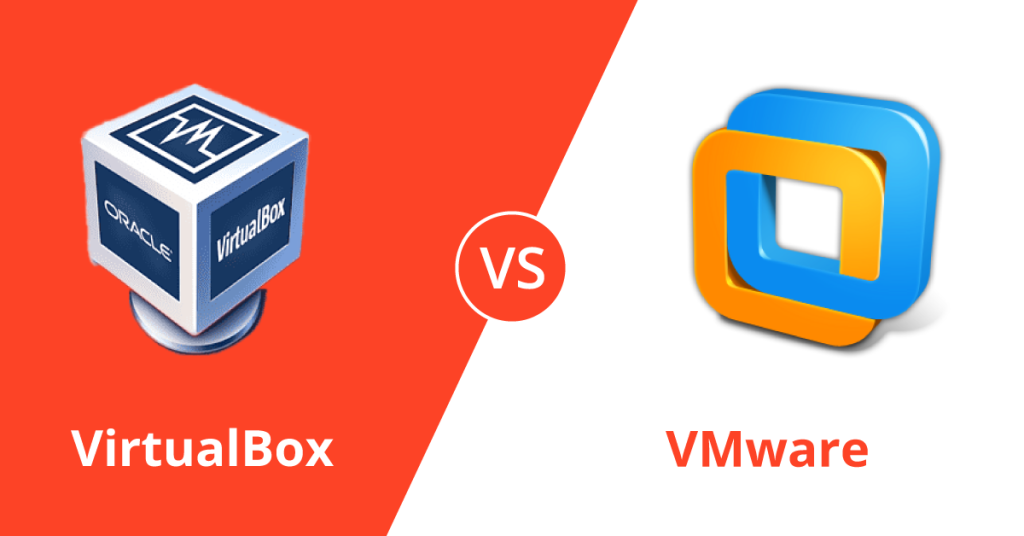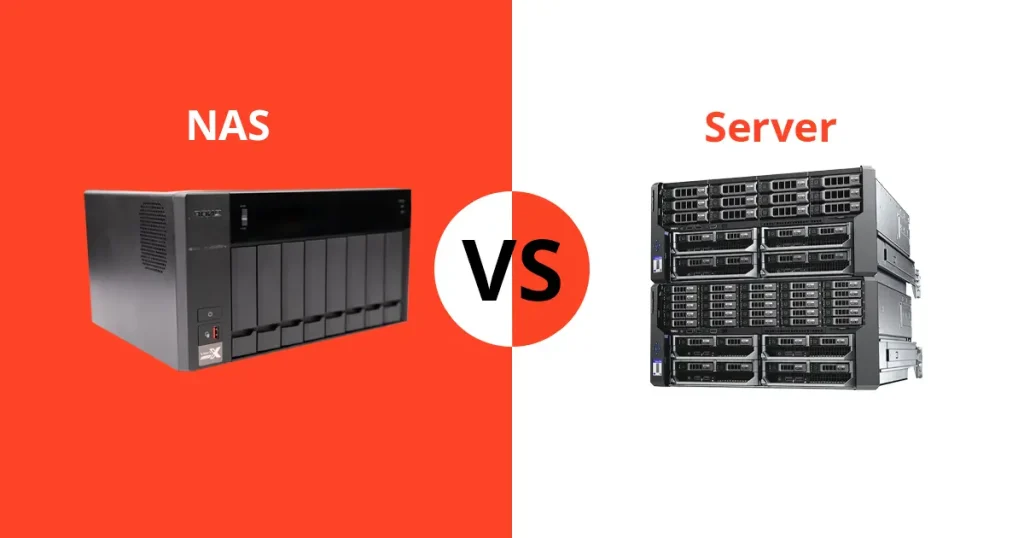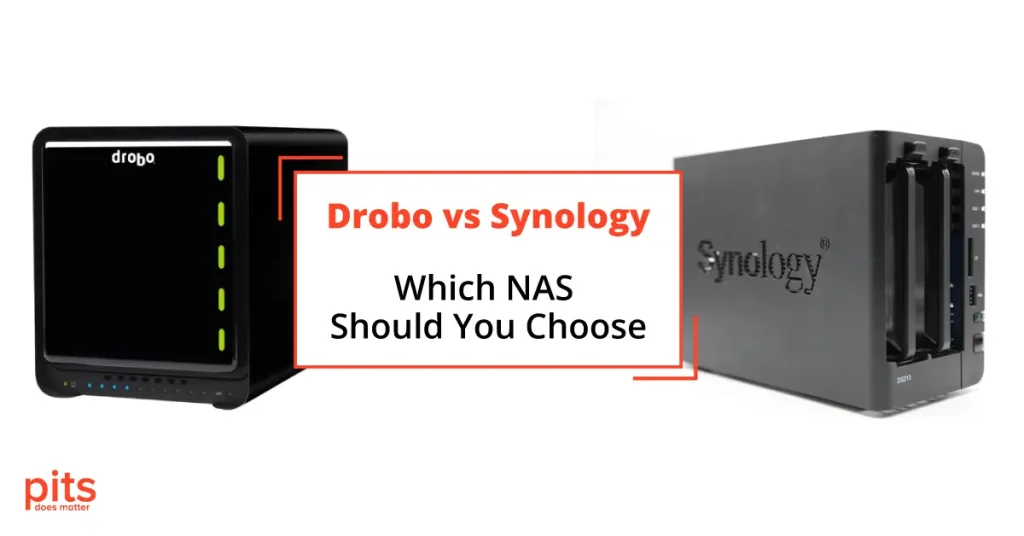In the continually evolving sphere of data storage solutions, Solid State Drives (SSDs) have ushered in a transformative era in data management. Diverging from conventional Hard Disk Drives (HDDs), SSDs boast remarkable swiftness, efficiency, and dependability, owing to their absence of mobile components and reliance on flash memory technology. Amid the realm of SSDs, two prominent contenders emerge in their quest for supremacy: SAS SSD and SATA SSD. Within the confines of this discourse, we shall meticulously dissect the disparities between these two technologies, meticulously scrutinizing their merits, performance attributes, and practical applications. This endeavor seeks to furnish you with the requisite insights for a judicious selection of the optimal SSD solution aligned with your requisites.
Grasping the Tenets of SSD Technology
Prior to delving into the nuances distinguishing SAS SSD and SATA SSD, it is prudent to briefly apprehend the foundational principles underpinning SSD technology. In stark contrast to HDDs, which harness magnetic platters and read/write mechanisms, SSDs harness NAND flash memory for the storage and retrieval of data. This inherent distinction obviates the need for mobile components, culminating in heightened resilience, resistance to shock, and power efficiency characterizing SSDs. Furthermore, the absence of mechanical constituents engenders expedited access intervals, augmented random read/write velocities, and curtailed latency.
SATA SSD: The Confluence of Elevated Performance and Cost-effectiveness
Contrastingly, SAS (Serial Attached SCSI) SSDs usher in an entirely novel echelon of SSD performance. SAS constitutes a rapid and high-performance interface meticulously tailored for applications at the enterprise tier. In comparison to SATA SSDs, SAS SSDs demonstrate superior data transfer velocities and more resilient data management proficiencies. Their particular forte lies in adeptly addressing exigencies mandating expeditious read/write speeds and minimal latency, exemplified in real-time data manipulation, database utilization, and virtualized operational milieus.
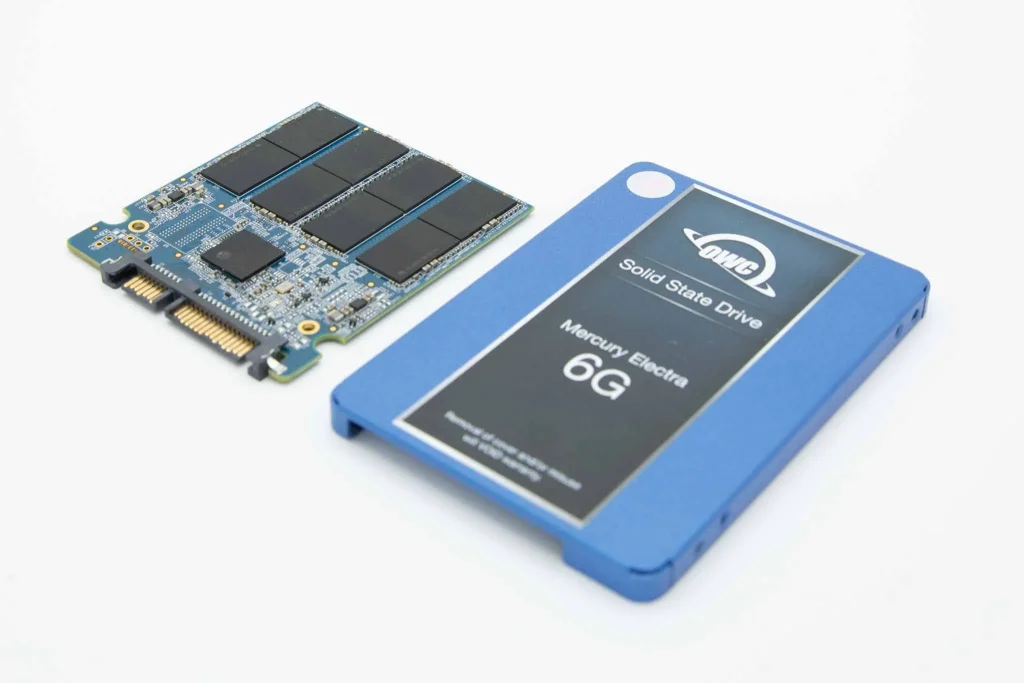
Distinguishing SAS from SATA resides in their architectural disparities. SATA SSDs are conventionally crafted to cater to client-based applications, whereas SAS SSDs are meticulously engineered to meet the exacting demands inherent to enterprise-level workloads. Notably, SAS SSDs are often endowed with superior error correction, heightened safeguards against power loss, and elevated end-to-end data integrity. This amalgamation of attributes renders them a more dependable choice than SATA drives, especially within the realm of critical business environments.
Comparative Analysis of Performance: SAS SSD vs SATA SSD
Upon thorough scrutiny of SAS SSD and SATA SSD performance attributes, the distinctions between the two technologies manifest discernibly. SAS SSDs exhibit augmented read/write speeds, with the potential to scale to several gigabytes per second, whereas SATA SSDs typically achieve velocities within the range of hundreds of megabytes per second. Particularly in the context of sequential workloads or the transfer of voluminous files, SAS SSDs markedly outstrip their SATA counterparts.
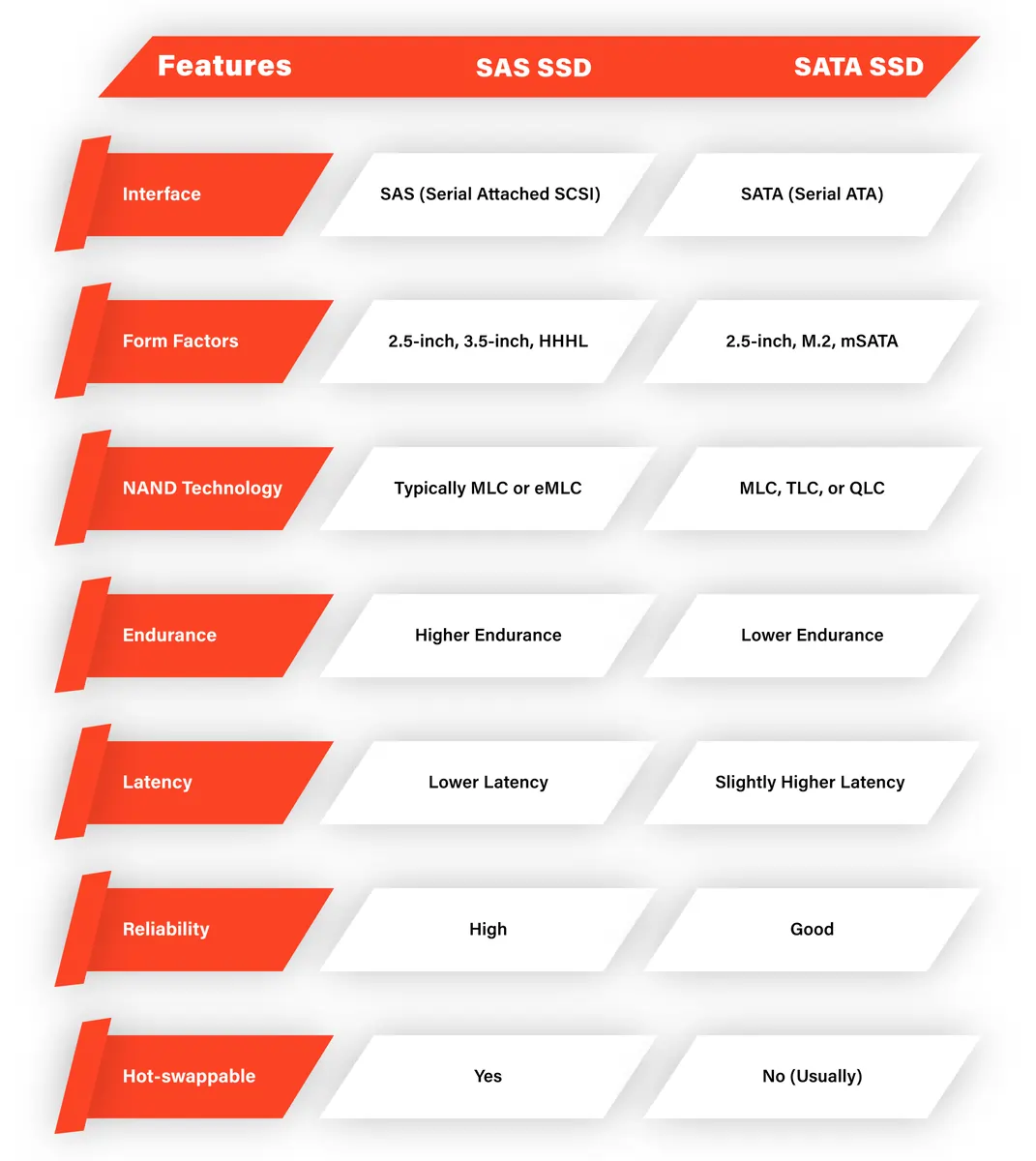
Moreover, with regard to random input/output (I/O) performance, SAS SSDs maintain a pronounced advantage. The sophisticated SAS interface permits a greater volume of I/O operations per second (IOPS), rendering them optimally suited for tasks involving a multitude of minor read/write operations conducted concurrently.
Utilization Scenarios: SAS, SATA, and NVMe
The selection among SAS, SATA, and NVMe (Non-Volatile Memory Express) SSDs is fundamentally contingent upon the envisaged employment scenario and fiscal considerations.
SATA SSDs: These drives find their optimal utility in routine computational tasks, encompassing activities such as internet browsing, textual content manipulation, and multimedia engagement. They proffer a fiscally prudent solution for individuals and modest-sized enterprises seeking to transition from conventional HDDs without straining their financial resources.
- SAS SSDs: Preeminent advantages associated with SAS SSDs are realized by corporate entities and data centers, wherein these drives flourish within high-performance computational environments. Their aptitude extends to hosting virtualized machines, managing extensive-scale databases, and executing applications of paramount consequence.
- NVMe SSDs: NVMe drives epitomize the zenith of SSD technology, furnishing even more accelerated velocities in comparison to both SAS and SATA counterparts.
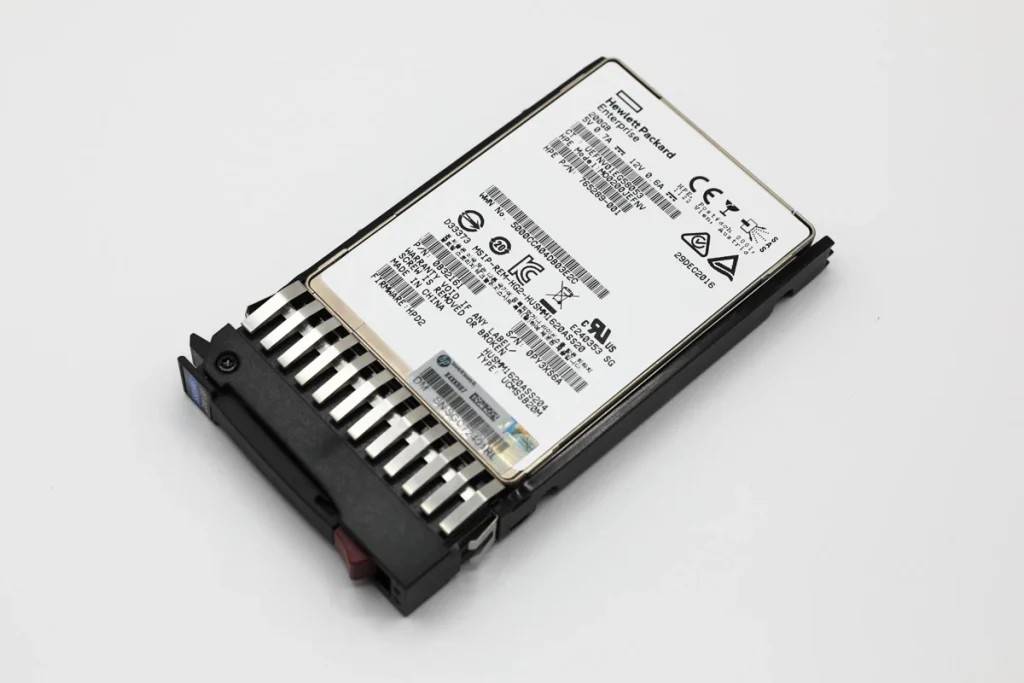
These drives find their zenith in workloads necessitating unparalleled performance, encompassing domains such as content creation, high-resolution video manipulation, and intricate simulations.
Dependability: SAS SSDs Assume Precedence
Dependability emerges as a pivotal consideration in the process of selecting storage solutions for pivotal data repositories. Rooted in an enterprise-tier construction, SAS SSDs inherently surpass SATA drives in terms of reliability. Augmented error correction capabilities and elevated data integrity mechanisms intrinsic to SAS SSDs engender unwavering safeguarding and perpetuation of data integrity.
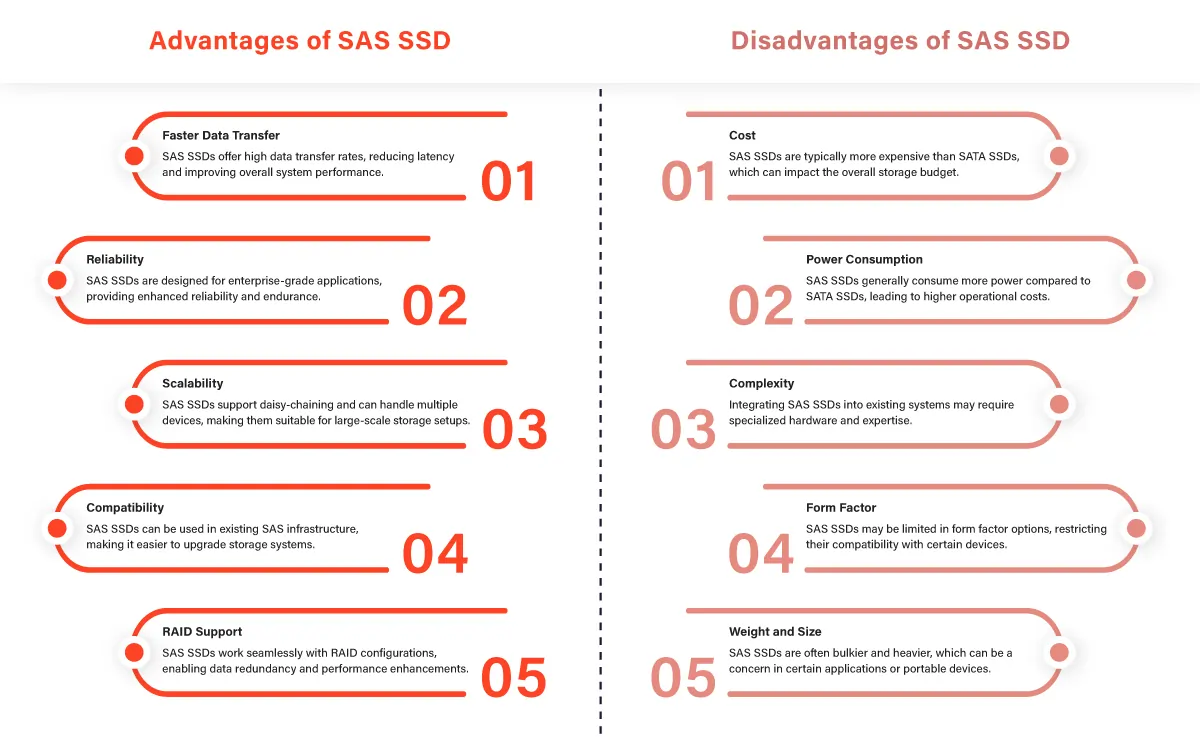
Albeit SATA SSDs unquestionably exhibit heightened dependability in contrast to traditional HDDs, they may fall short of furnishing the level of resolute robustness requisite for mission-critical deployments. Consequently, SAS SSDs stand as the favored preference within contexts wherein the ramifications of data loss or system malfunction hold the potential for far-reaching consequences.
Within the realm of solid-state drives (SSDs), both SAS SSD and SATA SSD exhibit distinct merits and limitations. SATA SSDs proffer an economically viable point of entry into the sphere of solid-state storage, ushering in a notable augmentation in performance in contrast to conventional HDDs. In a converse vein, SAS SSDs unlock the authentic potential inherent to SSD technology, characterized by their high-velocity interface, commendable read/write speeds, and reliability commensurate with enterprise requisites.
During the deliberation between SAS SSD and SATA SSD, it is prudent to factor in the exigencies of your operational load, the magnitude of performance prerequisites, and the paramountcy of data integrity. For quotidian computational undertakings, SATA SSDs amply suffice. However, should your enterprise pivot upon high-performance computation or applications of critical import, the investment in SAS SSDs emerges as a wise choice, securing superlative performance and data preservation.
Ultimately, irrespective of your selection, the adoption of solid-state drives constitutes a significant stride towards a swifter, more dependable, and efficacious computing milieu. As technology’s trajectory continues to unfurl, SSDs are poised to perennially command the vanguard of data storage solutions, propelling the perimeters of the attainable within the digital domain.
Frequently Asked Questions
What Constitutes the Principal Distinction Between SAS SSD and SATA SSD?
SAS SSD and SATA SSD are delineated primarily by their interfaces and intended utilizations. SAS (Serial Attached SCSI) SSDs are purpose-engineered for high-performance enterprise applications, affording swifter data transfer rates and heightened reliability. Conversely, SATA (Serial Advanced Technology Attachment) SSDs find common deployment in consumer-oriented devices and entry-level servers, tendering a more economical resolution for routine computational undertakings.
Which SSD Holds Superior Velocity: SAS or SATA?
Invariably, SAS SSDs surpass SATA SSDs in terms of velocity. Endowed with their rapid interfaces and adept data handling capabilities, SAS SSDs achieve elevated read/write speeds, thus ideally suiting operations necessitating instantaneous data access, such as real-time data processing and database applications.
Can a SAS SSD be Incorporated into My Personal Computer or Laptop?
SAS SSDs exhibit compatibility with select systems, although they are not a standard choice for personal computers or laptops. The SAS interfaces are predominantly found within the ambit of enterprise-grade servers and data center apparatus. For consumer-grade devices, SATA SSDs represent the more prevalent and apt selection.
Do SAS SSDs Garner Greater Reliability in Comparison to SATA SSDs?
Indeed, SAS SSDs are generally deemed to be more dependable than their SATA counterparts. Tailored for enterprise-level deployment, SAS SSDs are replete with augmented error correction, safeguards against power loss, and mechanisms ensuring end-to-end data integrity. These attributes render SAS SSDs better aligned for pivotal business environments where data dependability holds paramount importance.
Do Cost Disparities Exist Between SAS SSD and SATA SSD?
Indeed, a cost disparity prevails between SAS SSD and SATA SSD. SAS SSDs tend to command a higher price than SATA SSDs, attributed to their advanced technology and features tailored for enterprise usage. SATA SSDs furnish a more economically accessible avenue for individuals seeking elevated storage performance without incurring the premium associated with SAS SSDs.
We’re Here to Help
Our experienced team is committed to helping you recover your critical data. No matter the situation, we work diligently to ensure the best possible outcome. Take action now and let us restore what’s important to you.
Start Recovery Process
"*" indicates required fields
